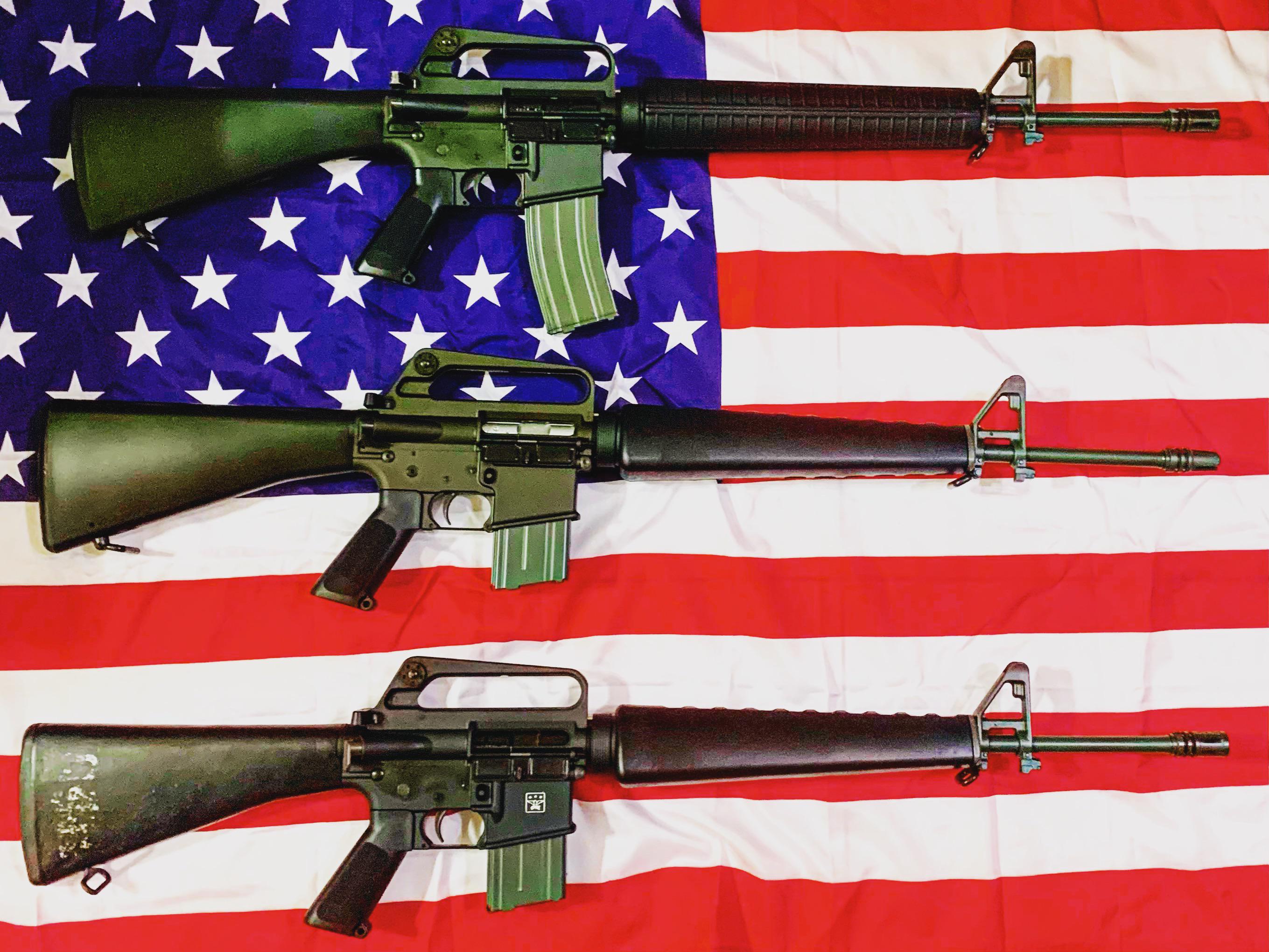
M16
The M16
With some eight million manufactured, it is the most-produced 5.56x45mm weapon in service today. The most recent version, the M16A4 – the fourth generation in the series – was adopted in 1997. It was equipped with a removable carry handle, it is fitted with a Picatinny rail for mounting optics and other ancillary devices.

It is based on a design (the Colt AR-15) that had already been rejected by the Chief of Staff of the Army in favour of the heavier 7.62 mm M14. Colt brought the weapon to DARPA in 1962.
 In 1964, the XM16E1 entered US military service as the M16 and in the following year was deployed for jungle warfare operations during the Vietnam War. The weapon had quite the baptism of fire in Vietnam; M16s were prone to jamming, made worse by the fact that the firearm was wrongly touted at the time as being "self-cleaning." As a result, the M16 earned the nickname "Jamming Jenny."
In 1964, the XM16E1 entered US military service as the M16 and in the following year was deployed for jungle warfare operations during the Vietnam War. The weapon had quite the baptism of fire in Vietnam; M16s were prone to jamming, made worse by the fact that the firearm was wrongly touted at the time as being "self-cleaning." As a result, the M16 earned the nickname "Jamming Jenny."

To encourage proper care of the M16 the U.S. military responded by issuing a comic book. It was written to explain the tools for cleaning the gun as well as the importance of regular maintenance in a way that differed from past manuals.

The 32-page pamphlet/comic, The M-16A1 Rifle: Operation and Preventative Maintenance, was written by noted cartoonist William Erwin Eisner, and it was a key departure from the traditional manuals that the War Department had issued for decades. Instead of relying mostly on the text and black and white photos, it featured colourful illustrations, and it also featured plenty of sexual innuendos including a buxom blonde who offers instructions with catchy subheads such as "How To Strip Your Baby" and "Sweet-16." Reprints are now available on Amazon.com.

Through Project AGILE, DARPA purchased 1,000 AR-15s and issued them to combat troops in Southeast Asia for field trials, to prove that the high-velocity 5.56 mm round had satisfactory performance. The subsequent DARPA report documenting the lethality of the AR-15 was instrumental in motivating the Secretary of Defence to reconsider the Army’s decision and this led to the first large-scale procurement in 1966 of a modified AR-15—the M16—for deployment in the Vietnam conflict.

By 1967 Colt and the Army agreed to implement a number of modifications to the rifle to increase reliability. A heavier buffer would slow down the M16’s rate of fire, the plastic stock would be made more rugged by using thicker plastic, and the chamber and barrel would be chrome-plated to resist corrosion. Colt would treat steel parts with a phosphate coating to resist rust and improve aluminium anodization. The first rifles with these changes were in the field by late 1967, with the rest deployed by late 1968.














